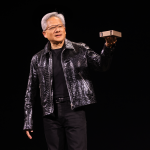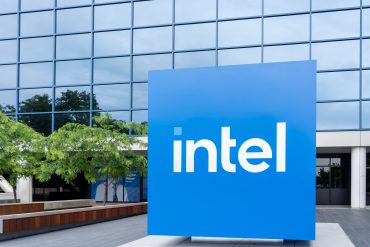
- Asia Markets
- Geopolitics & Policy
- Semiconductors
China Curbs Nvidia H20; $23B at Risk as 15% U.S. Cut Bites
5 minute read

Chinese government restrictions on Nvidia’s AI chips threaten $23 billion revenue potential and accelerate domestic semiconductor development
Key Takeaways
- China discourages Nvidia H20 chip adoption for government and sensitive workloads, targeting state-owned and private firms amid security concerns and threatening Nvidia’s estimated $23 billion China revenue potential for 2025.
- 15% U.S. revenue-share requirement on China AI chip sales creates political friction, with Beijing using the “pay-to-play” structure as justification to steer procurement toward domestic alternatives like Huawei Ascend processors.
- Policy-driven market bifurcation accelerates as China codifies avoidance of U.S. chips in sensitive domains while maintaining commercial access, potentially forcing downward revisions to 2025 China unit volumes for Nvidia and AMD.
Introduction
China has instructed domestic companies to avoid Nvidia’s H20 processors for government-related and sensitive projects, escalating tensions over AI chip exports. The guidance targets both state-owned enterprises and private firms, creating substantial procurement risks for Nvidia’s China operations.
This directive threatens Nvidia’s recovery strategy in China following recent U.S. export approval under a controversial revenue-sharing arrangement. The move reinforces China’s push toward domestic AI semiconductor alternatives while challenging American chipmakers’ market access in the world’s second-largest economy.
Key Developments
Chinese authorities issued notices to state-owned and private companies discouraging H20 processor adoption, particularly for government contracts and critical infrastructure projects. According to the Financial Times, the guidance also affects certain AI accelerators from Advanced Micro Devices, complicating both companies’ China market recovery efforts.
The restrictions coincide with a new U.S. export licensing framework requiring Nvidia and AMD to pay Washington 15% of revenue from China AI chip sales. This unprecedented arrangement allows resumed sales of lower-end AI processors while extracting fiscal value for the U.S. Treasury.
State-linked Chinese media outlets have questioned H20 security, citing alleged backdoors and reliability concerns. Nvidia’s security leadership publicly denied these claims, stating the company’s products contain no backdoors, kill switches, or spyware capabilities.
Market Impact
The guidance creates immediate risks for Nvidia’s projected China revenue streams. Industry analysts estimate potential 2025 H20 sales in China at approximately $23 billion, which would generate roughly $3.5 billion for the U.S. Treasury under the 15% revenue-sharing requirement.
Chinese procurement shifts toward domestic suppliers could significantly impact public-sector and critical infrastructure demand segments. These represent the most strategically important and stable customer categories for AI processor sales.
The restrictions provide competitive advantages for Chinese AI accelerator manufacturers, particularly Huawei’s Ascend product line. State buyer migration to domestic alternatives aligns with Beijing’s technology self-reliance objectives and could accelerate market share gains for local suppliers.

Strategic Insights
China’s guidance establishes a two-track technology approach, enforcing strict avoidance of U.S. semiconductors in sensitive applications while maintaining selective commercial access. This policy framework deepens technological bifurcation between Chinese and American AI ecosystems.
The 15% revenue-sharing construct creates a political rationale for Chinese authorities to question U.S. chip suitability for sensitive work. Beijing frames the arrangement as evidence of compromised security, regardless of technical specifications or actual capabilities.
Public-sector procurement restrictions accelerate investment in Chinese AI hardware and software development. Domestic ecosystem advancement reduces dependency on Nvidia’s CUDA software platform, historically a significant competitive moat for the American chipmaker.
Expert Opinions and Data
Nvidia maintains its processors contain no security vulnerabilities, with company officials emphasizing transparency in product design and manufacturing. The company stated in July that its products have no backdoors enabling remote access or control capabilities.
Industry observers note that unproven security narratives can drive procurement shifts toward domestic vendors for compliance and reputational protection. State-associated media coverage reinforces these concerns, creating market pressure independent of technical merit.
The H20 processor represents a China-compliant, performance-limited version of Nvidia’s architecture designed to meet U.S. export restrictions. Chinese guidance characterizing these as “less advanced semiconductors” undermines the product’s value proposition and market positioning.
Conclusion
China’s H20 processor guidance creates substantial uncertainty for American AI chipmakers’ revenue projections and market access strategies. The policy establishes clear boundaries around sensitive technology adoption while maintaining Beijing’s leverage in ongoing U.S.-China technology negotiations.
The restrictions signal acceleration of domestic semiconductor substitution efforts and highlight growing policy risks for U.S. technology companies operating in Chinese markets. Revenue volatility and compliance challenges now characterize what industry analysts previously viewed as a stabilizing export relationship.








